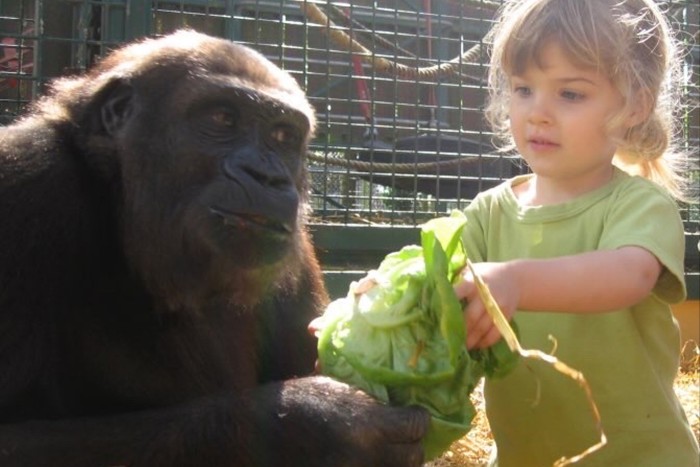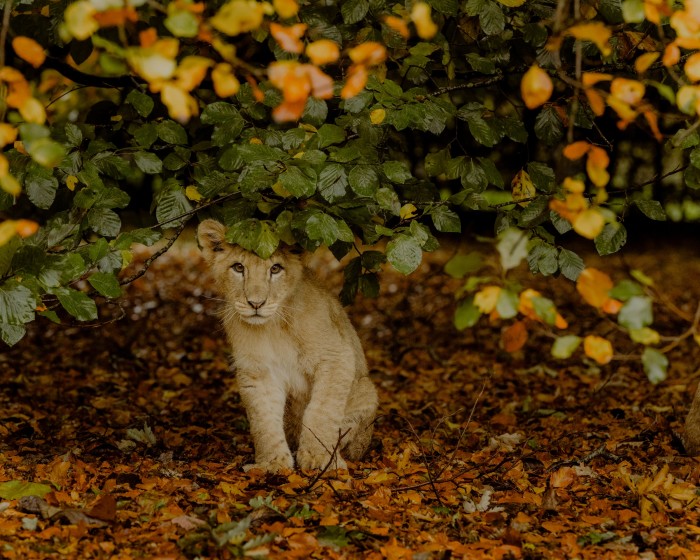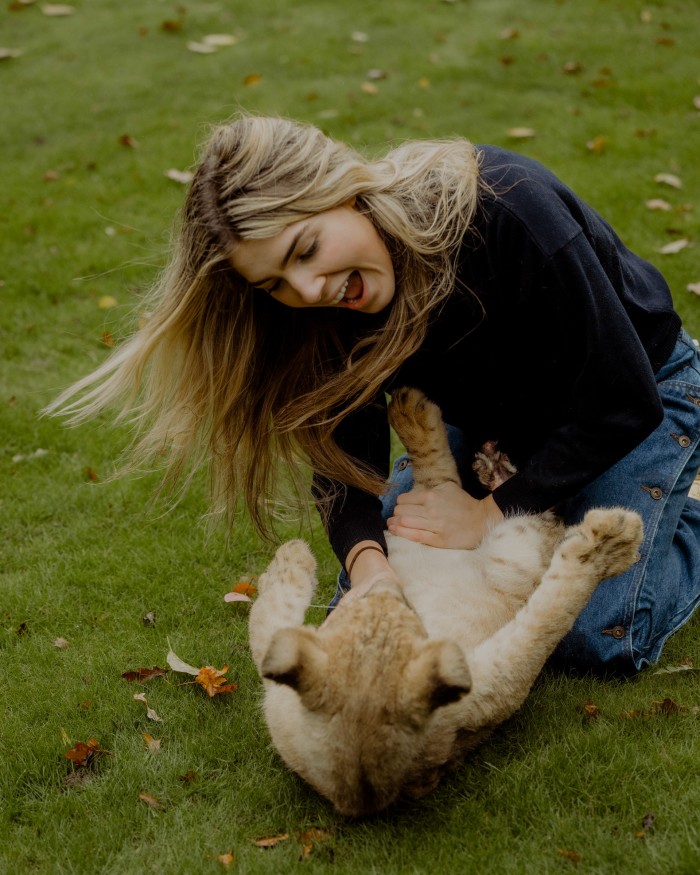Damian and Freya Aspinall’s wild ambitions

Roula Khalaf, Editor of the FT, selects her favourite stories in this weekly newsletter.
Freya Aspinall shoots her father a look. The businessman and conservationist Damian Aspinall, 63, has just compared his 20-year-old daughter to a Rottweiler. “When I was her age I was the same,” he explains. “I try not to let Freya make the same mistakes as I did when I was young. But when she’s let off the lead and pointed in the right direction, she’s brilliant. She has the passion and energy to succeed.”
“I am a mini version of my dad,” admits Freya, who, as well as working with her father, is an aspiring model. “If I ever did a magazine cover it would be as a conservationist.”

The pair are sitting side by side at Damian’s office in Belgravia, London. He has just flown in from Africa. Freya is exuberant and glamorous; her father tall, slim and authoritative. Freya left school at 16 to join her father at the UK-based charity The Aspinall Foundation (TAF) for the rescue, rehabilitation and protection of wild animals. The plan is that she will one day inherit her father’s position as chair. Freya is Damian’s daughter with the actress Donna Air, but he also has two older daughters, Tansy and Clary, with former wife Louise Sebag-Montefiore. “Of course my hope is that my children carry on the work. Any of them that want to will be given the opportunity to,” he says.


Certainly, his youngest daughter has the same passion and commitment. “Freya has inherited from me the ability to connect deeply with a wild animal,” says Damian. “She’s the first person apart from myself to go into the enclosure with a silverback gorilla in captivity.”
TAF grew out of The John Aspinall Foundation set up by Damian’s father John Aspinall in 1984. A flamboyant and controversial gambling tycoon, John started a private animal collection at Howletts, his Kent country estate, in 1957. He opened it to the public in 1975. A year later he expanded his operation with nearby Port Lympne Reserve. Legend has it that back in the 1960s he would turn up at the Clermont Club, the casino he opened in Berkeley Square, with a pet tiger. Howletts and Port Lympne are still open to the public as “wild animal parks”, but have since repositioned themselves as breeding sanctuaries for rare and endangered species with a mission, where possible, to return animals to the wild. Across the two parks, visitors can see more than 125 species, including African elephant, eastern black rhino, western lowland gorilla, Sumatran tiger, giraffe, lion and leopard.


“I grew up with animals and couldn’t imagine my world without them,” says Freya. “This is in my blood – I’ve always known what I wanted to do.” She works alongside the TAF “trio”: Damian, his stepbrother Amos Courage, director of overseas projects, and Dereck Milburn, southern Africa project director. “Dad is a big-picture man,” she says of the dynamic. “He’s taught me to take risks, and that anything is possible. What I learn from Amos and Dereck is how important detail is, to be on the ground and to know your facts.”
Damian admired his father’s pioneering work with breeding rare and endangered species, but by the time he took over the parks on John’s death in 2000, the parks were losing £3mn a year between them. “It was one of our bones of contention because I used to say, ‘You’re just throwing money away, whereas we need to run this as a business.’ But he could never get his head around that.” Damian describes the legacy then as “a poisoned chalice”. He and Courage, however, were determined to turn things around, although, as he says, “Everyone thought they would close within three or four years.” He quickly introduced new strategies. “I thought that if we ran it properly, the money we saved we could reinvest into protecting the wild and rewilding, which was what we should be doing. A change of direction was needed and it took a few years to sort out. We’ve bred 150 gorillas – which is a world record – but what’s the point of breeding 150 gorillas unless you can return them? So far we’ve returned 75.” The parks are now profitable and TAF has rescued, rehabilitated and rewilded around 1,500 animals across 13 countries.
The rewilding programme is controversial, with critics – labelled “zoorocrats” by Damian – claiming that domestically reared wild animals will die because they have lost their instinct to survive. However, the vast majority of TAF rewildings have been successful, he says. “Our survival rate with gorillas rewilded is 96 per cent, primates are more than 90 per cent, cheetahs are more than 95 per cent.” A recent notable success is Djongo: a gorilla born at Port Lympne who was rewilded to Gabon and fathered the world’s first baby born in the wild to captive-born gorillas. TAF is now looking to achieve another world first by rewilding a herd of 13 breeding elephants to Africa.

Rewilding is a complex and lengthy process that entails finding suitable homes and obtaining export and import permits. Animals are kept in protected zones in the designated country while they acclimatise: learning how to hunt for themselves can actually take years. They are released either into the “wild” wild or into reserves, depending upon the species, where locals and TAF continue to monitor them for years.
Damian points out that forging a bond with an animal can be advantageous. “When you sit there with an animal, who you’ve done nothing to train or tame or dominate, at some point the animal looks at you and goes, ‘You’re OK, you’re on my side,’” says Damian. “Animals are honest. If those gorillas didn’t want to interact with Freya they’d tell me with their body language before she goes in.”

Freya nods: “Sometimes when dad and I have been in there for a long time and they’ve had enough of us, a silverback will take dad’s hand and lead him to the door.”
Not all animals can be befriended. Says Damian: “Monkeys are best left alone.” Freya argues that with time and effort, maybe you could forge a friendship with them.
Such differences of opinion between father and daughter are frequent and healthy, Damian acknowledges, adding that the familial bond and generation gap are, on the whole, an asset. Especially when it comes to social media. “When I posted a video online about gorillas I got 100,000 views,” he says. “When Freya posted the same video, she got 18 million.”

Comments